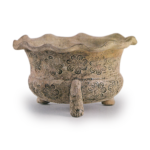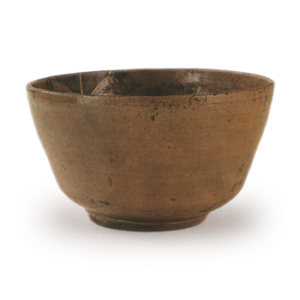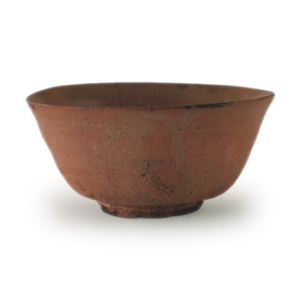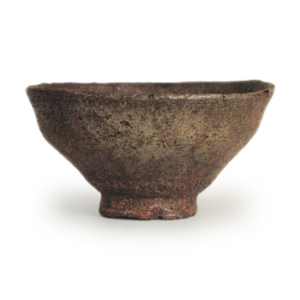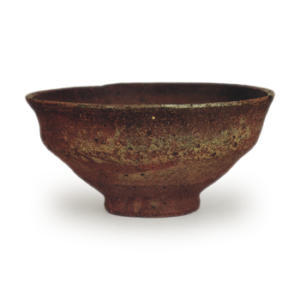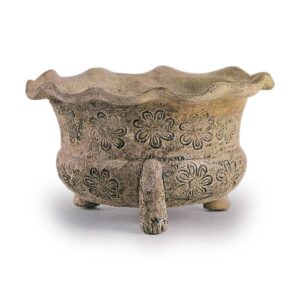
Excavated from Hironoda Kiln, Seto City, Aichi Prefecture, Japan
14th century
Height 7.2cm, Bowl diameter 12.6cm, Body diameter approx. 9.7cm
Seto City Museum of History and Folklore
This is a variant of a koshi incense burner, which is extremely rare among Kosedo incense burners.
The oral part is remarkably large in contrast to the body, and the mouth rim has a lily-shaped mouth, which is common in Buddhist vases of this period. It is made of grayish-white, rather coarse clay and is water-ground, with long animal feet attached from the upper edge of the rim. The design consists of a seven-petaled double-petaled floral motif in the inka (seal flower) technique. The firing was poor and the ash glaze was not fully melted. Part of the mouth rim is crushed, but it is still in good shape. It is still considered to be made in the mid-14th century.

